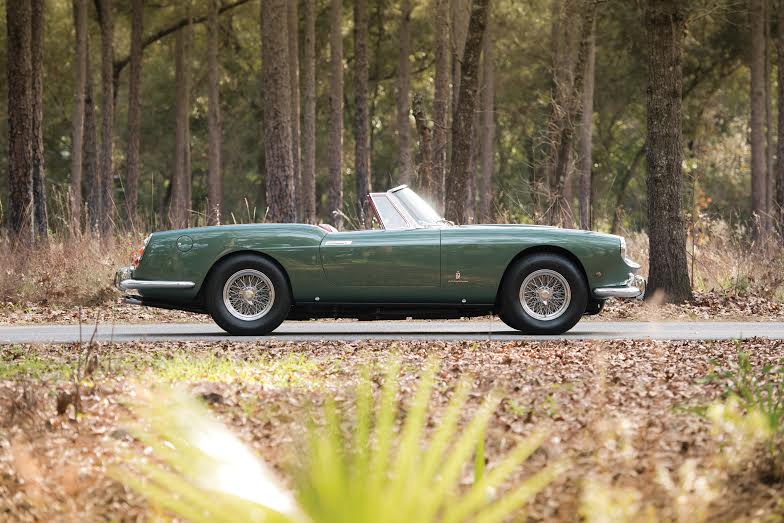Alt Investments
GUEST ARTICLE: A 21st Century Roadmap For Investing In Collectible Cars

Kemp Stickney, chief fiduciary officer and head of family wealth at Wilmington Trust Company (a subsidiary of M&T Bank Corporation), talks about the state of the market for collectible cars, and goes through some of the key related considerations for investors.
For many, collecting cars is all about recapturing the passions of youth, buying the Corvette or Camaro or Pontiac GTO that was out of reach in its heyday but now is within the budget. For others, rarity is the pull. Special edition autos like the Bugatti Veyron Jean Bugatti Edition (only three ever made) or the Jaguar XKR 75 (75 manufactured) offer the thrill of exclusivity.
Yet for most, it is the sheer beauty of the well-made, well-maintained automobile that compels obsession.
Rising prices, pockets of opportunity
Magic or not, the market for collectible cars has cooled slightly from its red-hot levels of 2014, when a 1962 Ferrari 250 GTO Berlinetta became the most expensive automobile ever sold, realizing more than $38 million at the Bonhams Auction in August of last year (source: Tech Times, August 18, 2014). Still, both the price and volume of transactions remains healthy.
McKeel Hagerty, chief executive at Hagerty, a Traverse City, Michigan-based insurer of collectible cars, said that $1.3 billion in collectible cars had been auctioned in 2014, up from $1.2 billion in 2013. Some 158 cars sold for more than $1 million, 13 more than in the previous year (source: CNBC, December 16, 2014).
Hagerty’s May Market Trends Report finds, though, that
market leadership has shifted, with prices at the very top end of
the collectible car market softening and strength emerging in
value-oriented sectors. Hagerty’s Affordable Classics Index,
which measures performance of collectibles priced under $30,000,
has risen by 7 per cent from January to May 2015, outpacing
the appreciation of higher priced categories (source: Hagerty
Market Trends, May 2015).
Analyst Dave Kinney said: “While the top of the market is
exercising restraint, buyers at the lower tiers of the market are
more optimistic... The 7 per cent climb since January is this
group’s biggest move on record, and was pushed by a massive
upward correction for Karmann Ghias and several large private
sales for 240Zs. The Ford Mustang, Studebaker Avanti, and Buick
Roadmaster all notched sizable gains.” (source: Hagerty
Market Trends, May 2015).
Prices in various segments of the collectible car market
continually fluctuate, but over longer periods, classic
automobiles have been a very solid investment. Still, like any
other investment, there are no guarantees. According to Knight
Frank’s 2015 Wealth Report, classic cars have been the
top-performing luxury investment over the last five- and ten-year
periods. As of the end of 2014, collectible automobiles had
appreciated by 140 per cent since 2009 and by 687 per cent since
2004, outpacing all other luxury assets including fine art, wine,
coins, stamps and jewelry (source: The Wealth Report:
2015, Frank Knight 2015).
Managing your collectible investment
Investing in collectible automobiles is different from buying stocks and bonds, and not just because you can drive them with the top down on sunny Saturdays. For instance:
Classic cars require care and maintenance. In some cases, replacement parts may be difficult to obtain or expensive. In others, it can be hard to find repair professionals familiar with these unique vehicles. Still others may require special storage facilities, or, in some cases, a track to drive them on. Before you buy a collectible car, talk to experts to find out how much maintenance your specific model typically requires, and be prepared to spend significant amounts on not just buying but keeping your car in top condition.
Insurance: Inexperienced car collectors often insure their vehicles through standard automotive policies, but this is usually a mistake. For instance, since you probably don’t drive your 1930s Duesenberg to work every day, your mileage and risk of accident is likely to be lower than for a standard car. Specialty collectible automobile insurance is often more cost-effective than a standard policy.
Collectibles raise tax issues: If you own your collectible car for more than a year and sell it for more than you paid, you will owe capital gains tax on the appreciation. However, you can deduct expenses for repairs and maintenance. That means it’s important to keep good records on your collectible car purchases, and talk to your tax advisor about any sales you plan to make.
Estate planning considerations: Like other collectibles, classic cars can be tricky to integrate into your overall estate plan. Your financial advisor can help you think about family members who might like to inherit your classic cars, and how you can ensure enough liquidity so that the vehicles won’t have to be sold to meet estate tax liabilities. He or she can also help you explore trusts and charitable giving strategies to minimize your heirs’ estate tax liabilities.
Of course, no one buys a classic car for purely financial reasons. Whether you aspire to the sleek speed and power of a vintage Porsche Carerra, the warmth and 1960s nostalgia of an original run Volkswagon Beetle, or the history encapsulated in a pre-WWI Model T Ford, enjoy the ride. The value of a collectible automobile extends far beyond its auction price.
Kemp Stickney will be speaking at the Family Wealth Report Summit in New York on Thursday September 24. Click here to register your attendance.
